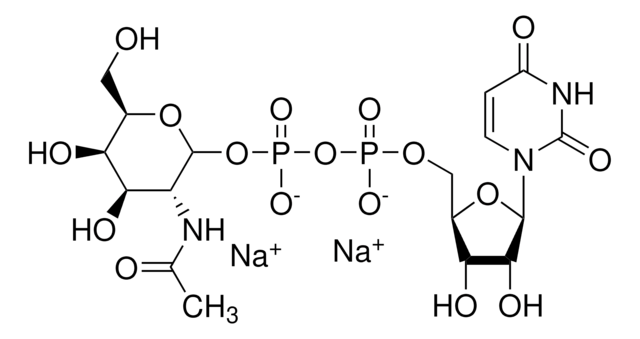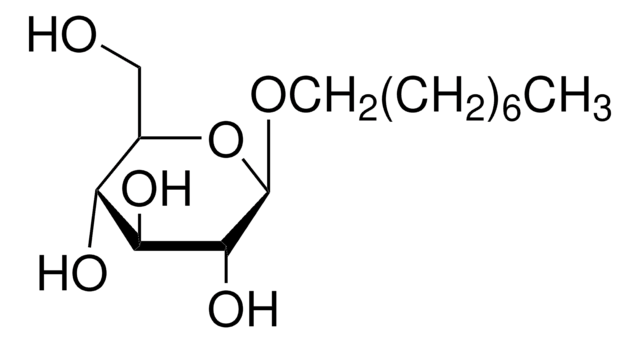C4695
CHAPSO
BioXtra
Synonim(y):
3-([3-Cholamidopropyl]dimethylammonio)-2-hydroxy-1-propanesulfonate
About This Item
Polecane produkty
opis
zwitterionic
linia produktu
BioXtra
Próba
≥98.0% (TLC)
Postać
powder
masa cząsteczkowa
micellar avg mol wt 7000
liczba agregacji
11
zanieczyszczenia
≤0.0005% Phosphorus (P)
≤0.1% Insoluble matter
pozostałość po prażeniu
≤0.1%
CMC
8 mM (20-25°C)
8 mM (micellar weight =9960)
mp
184-186 °C (lit.)
temp. przejścia
cloud point 90 °C
rozpuszczalność
H2O: 0.1 M, clear, colorless
ślady anionów
chloride (Cl-): ≤0.05%
sulfate (SO42-): ≤0.05%
ślady kationów
Al: ≤0.0005%
Ca: ≤0.0005%
Cu: ≤0.0005%
Fe: ≤0.0005%
K: ≤0.005%
Mg: ≤0.0005%
NH4+: ≤0.05%
Na: ≤0.01%
Pb: ≤0.001%
Zn: ≤0.0005%
ciąg SMILES
[H][C@@]12C[C@H](O)CC[C@]1(C)[C@@]3([H])C[C@H](O)[C@]4(C)[C@]([H])(CC[C@@]4([H])[C@]3([H])[C@H](O)C2)[C@H](C)CCC(=O)NCCC[N+](C)(C)CC(O)CS([O-])(=O)=O
InChI
1S/C32H58N2O8S/c1-20(7-10-29(39)33-13-6-14-34(4,5)18-23(36)19-43(40,41)42)24-8-9-25-30-26(17-28(38)32(24,25)3)31(2)12-11-22(35)15-21(31)16-27(30)37/h20-28,30,35-38H,6-19H2,1-5H3,(H-,33,39,40,41,42)/t20-,21+,22-,23?,24-,25+,26+,27-,28+,30+,31+,32-/m1/s1
Klucz InChI
GUQQBLRVXOUDTN-XOHPMCGNSA-N
Szukasz podobnych produktów? Odwiedź Przewodnik dotyczący porównywania produktów
Opis ogólny
Zastosowanie
Kod klasy składowania
11 - Combustible Solids
Klasa zagrożenia wodnego (WGK)
WGK 3
Środki ochrony indywidualnej
dust mask type N95 (US), Eyeshields, Gloves
Certyfikaty analizy (CoA)
Poszukaj Certyfikaty analizy (CoA), wpisując numer partii/serii produktów. Numery serii i partii można znaleźć na etykiecie produktu po słowach „seria” lub „partia”.
Masz już ten produkt?
Dokumenty związane z niedawno zakupionymi produktami zostały zamieszczone w Bibliotece dokumentów.
Klienci oglądali również te produkty
Nasz zespół naukowców ma doświadczenie we wszystkich obszarach badań, w tym w naukach przyrodniczych, materiałoznawstwie, syntezie chemicznej, chromatografii, analityce i wielu innych dziedzinach.
Skontaktuj się z zespołem ds. pomocy technicznej








